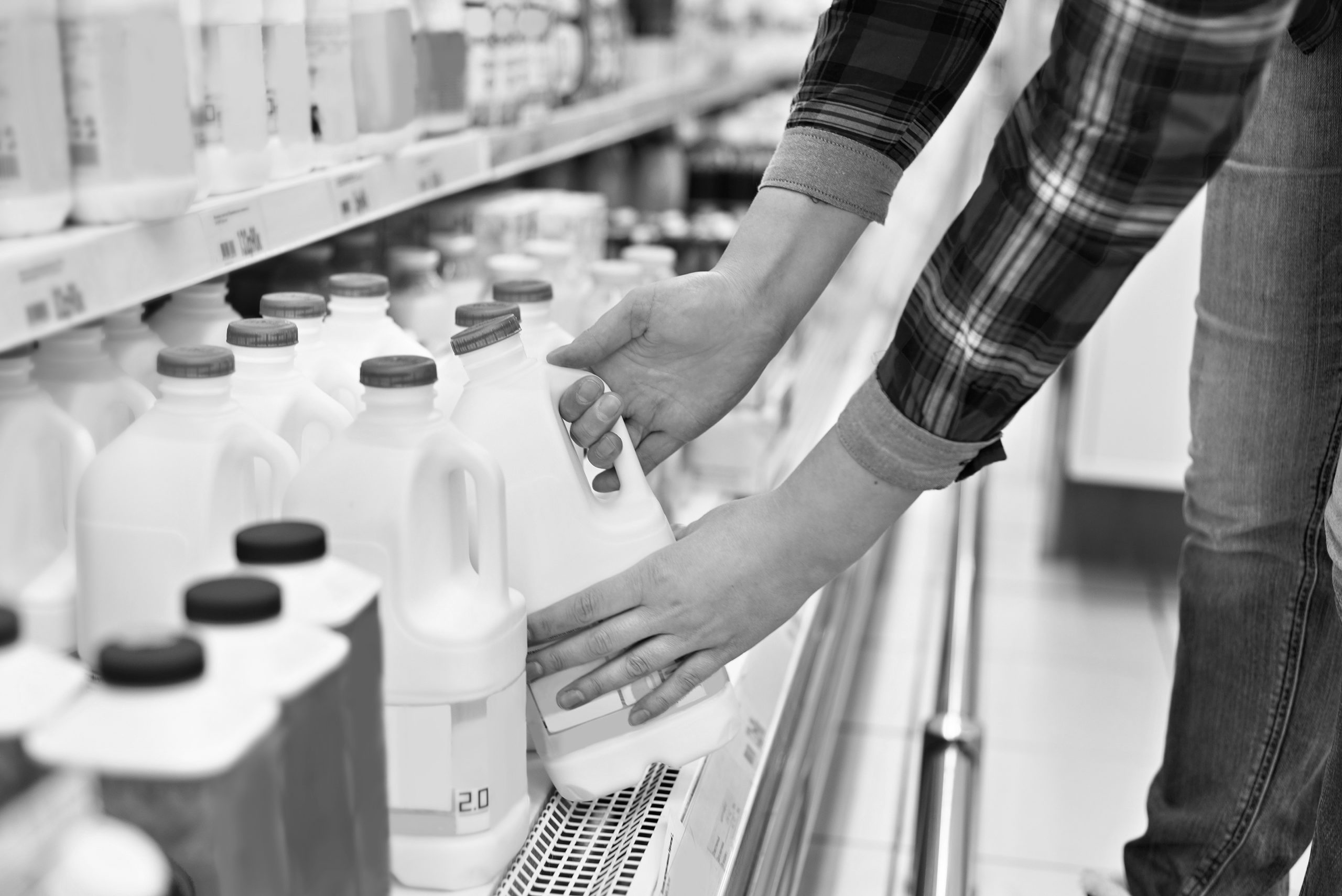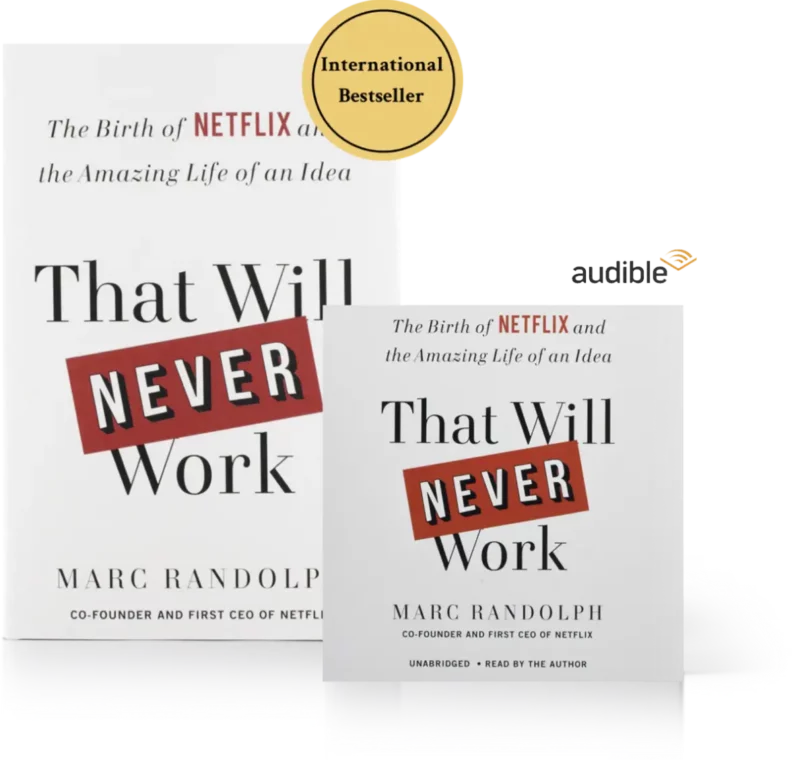Never Put the Milk in the Back.
Have the courage to put the customer first.

I’ll make you a bet.
Put me in any supermarket in the world – even one I’ve never been to before – and I’ll bet you I can walk straight to the milk. That’s because it’s always found in the same place: in a refrigerated case at the very back of the store. A location calculated to be as far as possible from the front door, that requires navigating past the salty snacks, the cereal, and several hundred other high-margin impulse-buy products.
And it’s not just supermarkets. You’ll find this pattern repeated in big-box stores, gas stations, 7-11s, and pretty much anyplace that sells food. Even places that don’t sell food – Like Fry’s, the electronics superstore – used to sell milk at the back of the store.
How could this be? Milk is one of the most common grocery items. Americans buy more than $10 billion of it a year. Wouldn’t it be a good idea to put it in the most convenient place?
Of course not. Because that would be doing what’s right for the customer! Why would a store do that? Their business model relies on people putting things in their cart they never intended to.
For years, supermarkets thought they were immune to the disruptive pressures of the digital world. “No one will be able to disrupt buying fresh vegetables,” I can imagine them saying. “Where else are they going to buy fresh milk? Amazon?”
Armed with that self-confidence, they ignored customer frustrations that went way beyond adding unwanted items to the cart. Long lines at checkout. Poor price visibility. The difficulty of figuring out whether the tortillas were on aisle seven or nine.
And everything was going great, until one company decided to do something about it. Long lines at checkout? Let’s get rid of checkout altogether; just take your item and walk out. Hard to find items? Let’s make navigation easier. And let’s put the most popular items in the most convenient locations, not the least.
What supermarket chain was finally bold enough to take this step? Well, surprise, it wasn’t a supermarket. It was Amazon, whose Amazon Go stores make it clear that at least one company has decided to put the customer first.
But this “put the customer second” thinking is not limited to supermarkets. Let’s take an example I’m a bit more familiar with.
When we launched Netflix in 1998, we were renting movies by mail, but when a new movie came out in theaters we never had it available on DVD. Not because we thought our customers wouldn’t want to watch it, but because the studios wouldn’t give it to us. For six long months, if you wanted to see a new movie, the studios forced you to go to the theater to see it. Only after that could you watch it on pay-per-view, cable TV, or video rental.
Was this because that’s what the customers wanted? Of course not.
No, the studios were putting the milk in the back of the store. They were prioritizing doing what was best for the theater owners – and their own bottom lines – over doing what was best for their actual customers. It took 22 years for that 6-month theatrical window to shrink to 3-months, but it took Covid – and the shuttering of theaters – to force studios to finally do what their customers had wanted all along, and release new movies in theaters and via streaming simultaneously.
I’m not saying it’s easy to move the milk to the front of the store. For supermarkets it means selling less soda and chips. For the studios it means upsetting the theater chains that make up more than half their revenue. For every company it means the same thing:
You have to have the courage to put the customer first – even if it cuts against your established business model.
I recently worked with a large manufacturing company that uses a multi-step distribution model; they sell to distributors, who sell to retailers, who sell to the end users. With so many mouths to feed, prices were high, product improvements were slow, and the people who actually touched the customer were poorly informed. But so what? The company was making money. The well-compensated salespeople were making money. The distributors were making money. Everyone was happy.
Until . . . something unsurprising happened: a competitor sprang up using the internet to sell an almost identical product directly to the end user. Their prices were lower. Product iterations happened more quickly. Information flow was better.
The CEO of the big manufacturer saw this happening and knew exactly what to do! They would launch a division selling direct to consumers, match prices, and the company’s combination of brand strength and marketing muscle would allow them to prevail.
But what happened? Well at the very hint that the company might start selling direct – and competing with its own distributors and retailers – the well-compensated salespeople (whose commissions rested on sales to distributors) all threatened to quit. The distributors all threatened to drop the product. The CEO caved.
And the milk? It stayed in the back of the store.
Doing what’s right for the customer – rather than your business model – is essential.
Your customers don’t care about your high-priced salespeople. They don’t care if your distributors are upset. They just know that if you don’t have the courage and strength to do what’s right for them, they will just take their business to someone who does.
Or put another way, if you aren’t willing to disrupt yourself, there is always someone else willing to do it for you.
But ultimately, the question to ask yourself is this: in your business, where are you putting the milk?
RECOMMENDED FOR YOU
Something Bad is Going to Happen. That’s Out of Your Control.
Podcast Episode 72
Is it a Culture Problem or a Hiring Problem?
October 25, 2022 • 38 min
